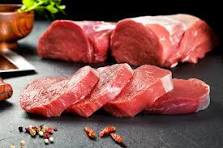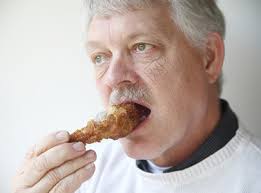The red meat footprint
7 March, 2025
Jianan Zhang
In Western industrialized countries, our diets revolve around meat. But rumours abound that being vegetarian is better for the environment. Could there be some truth to it? We investigate the evidence.
Last Meal Choices: A Glimpse into Our Meat-Centric Diet
Death row inmates in the United States put a lot of thought into their final meal choice. After all, it’s the last food they will eat on this Earth.
Their choice is telling, for overwhelmingly they want meat. Pork chops, filet mignon, steak, hamburger, meatloaf, fried chicken, sausages… with not a lentil, slice of haloumi, or vegetarian lasagne in sight.
Prisoners on death row might not be the most representative of social groups, but their choices give an inkling of the central role meat plays in everyday diets.

Humans and Meat: Evolutionary Roots
The very earliest fossil evidence of human eating habits bears the unmistakable signs of animal consumption. Our dental structure is designed for a diet that will tackle anything, whether animal or vegetable: canines and incisors for cutting and tearing, pre-molars and molars for grinding.
The Role of Meat in Modern Diets
Today, the human diet, especially that of Westerners, revolves around meat. Livestock products provide one-third of humanity’s protein intake.
In Australia, livestock production is a critical export industry and contributes to high domestic consumption of meat products. According to a 2005 report from the Australian government research agency, the CSIRO, an average Australian eats 35 kg of beef, 21 kg of pork, 36 kg of chicken, and 13 kg of lamb each year – roughly 290 g of meat per person, per day.
The Cultural and Economic Importance of Meat in Australia
Meat is popular in Australia thanks to our agriculture industry, which provides relatively cheap product, our pastoral history, and our culinary culture, which celebrates traditions like the barbeque and the meat pie.
The red meat industry alone is worth $15 billion annually. Meat production is increasing, and we’re eating more meat than ever before.



Be the first to comment